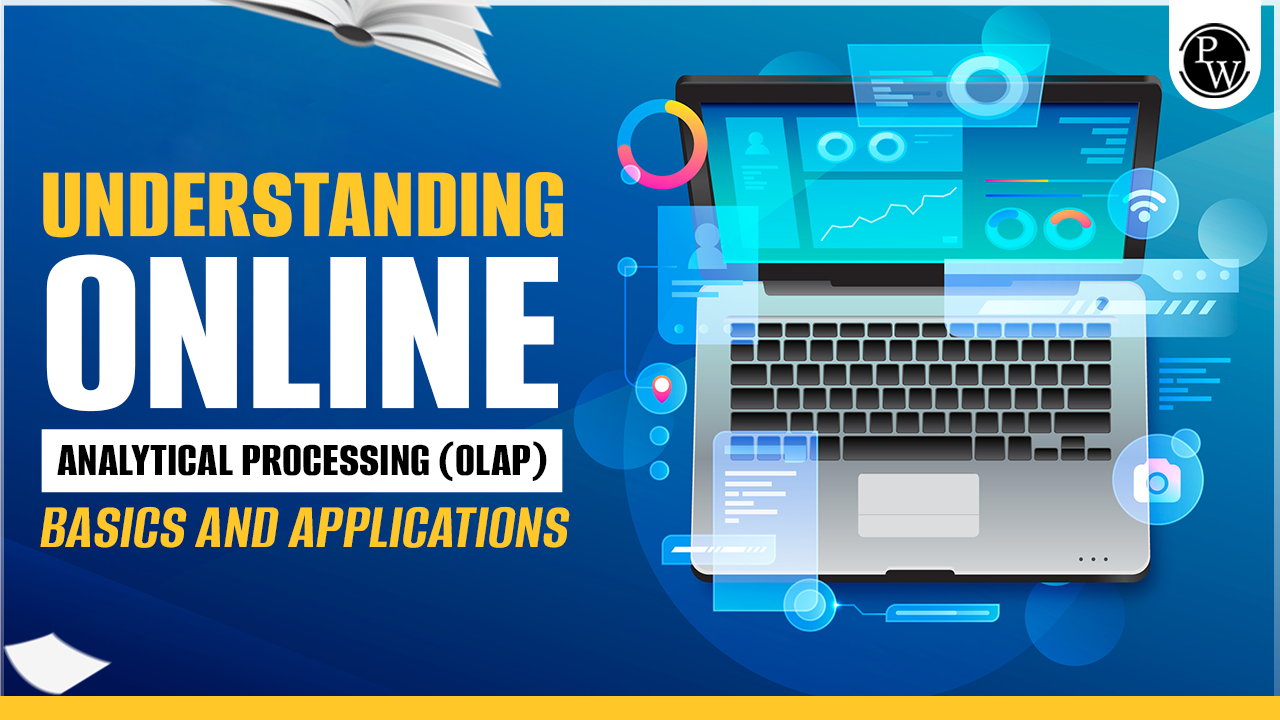OLAP stands for Online Analytical Processing (OLAP). It is a software technology that provides faster access to a large set of data. This software is generally used to extract data for various purposes through query data or other processes. OLAP is generally used for reporting and mining data from various sources.
The main objective of Online Analytical Processing is to provide faster access to data. As everything nowadays heavily relies on data, faster extraction of data is essential for an adequate analysis of the dataset. Various organisations use OLAP in fields such as accounting, sales, product planning, etc.
Start your data analytics career with PW Full Stack Data Analytics Online Course.Read the complete article to learn more about online analytical processing.
What is Online Analytical Processing?
Online Analytical Processing is a technology used for faster extraction of data from a large dataset. The extracted data is then analyzed for different purposes. It is used for multiple dimensional analytical (MDA) on datasets. The online analytical process includes report writing, relational databases, and data mining.
It is used to perform various data analyses such as trend analysis, cost estimation, data modelling, etc. OLAP tools are used for various organizations such as planning, performance management, forecasting, simulation, reporting, etc.
Let us take a real-life example of a mobile phone store. They maintain proper data about the types of mobile devices available at the store. They also maintain the purchase data, such as the name of the handset and total sales value. OLAP helps answer questions like which mobile is the customer’s favourite, which colour got more sales, etc. OLAP extracts data and uses it for various analyses so that users can easily access or perform a particular task when they have proper insight and then make some decisions.
Also check: Data analysis career scope
Importance of Online Analytical Processing
There are many advantages to using online analytical (OLAP) tools. Users who use the OLAP tools can have the following benefits.
- Faster Analysis of Dataset: With the help of OLAP, users can quickly analyse data from multiple analyses and provide a better view of the information contained within the dataset.
- Effective Query Execution: The data stored by OLAP are properly structured, which allows faster query execution. It helps users retrieve their essential information quickly.
- Enhanced Decision Making: As OLAP provides multiple data views, users can quickly check the data for various purposes. Users can easily analyze data for various trends, customer behaviour, etc.
- User Support: With the help of OLAP, complex datasets are converted into simpler, understandable forms. Even non-technical users can understand data from various angles, parameters, etc., which helps in proper decision-making.
- Proper data analysis: Users can quickly analyze data and solve complex problems.

Working on Online Analytical Processing
Online analytical processing helps users effectively perform various operations on complex data sets. Let us know the workings of online analytical processing here.

- OLAP collects, cleans, and simply organizes complex data based on various parameters.
- It collects data from various sources, such as websites, data warehouses, and relational databases.
- It then uses the ETL (Extract Transform Load) tools to clean, transform and store data in an OLAP cube with a proper structure.
- Data presented in an organized manner can be used for analysis and various operations.
- Users can perform various operations such as roll up, drill down, slice, dice, and pivot.
- Data is collected from various sources, such as applications, websites, etc. It is then stored in various data warehouses in the form of an OLAP cube. Users can efficiently perform operations on the organized data.
- OLAP cube contains the data extracted in an organized manner.
Types of Online Analytical Processing
There are three types of online analytical processing.
- Relational OLAP: It is also known as ROLAP and performs multiple data analysis on a relational database.
- Multiple OLAP: Multiple analysis, also known as MOLAP, is used to present data from a dataset in multidimensional form.
- Hybrid OLAP: The hybrid OLAP is a combination of ROLAP and MOLAP together. It performs multiple-dimensional analysis on relational databases, providing more capacity. It is also known as HOLAP.
What is OLAP Architecture?
The OLAP architecture consists of multidimensional system that consists of the following elements.
-
- Data Warehouse: Data from different sources is collected in a data warehouse. Data is processed with the help of various OLAP tools to make it ready for analysis.
- ETL (Extract Transform Load): The ETL tools are used to extract data prepare, and store it in a suitable form ready for analysis tasks. With the help of ETL data, information is standardized before being made available for analysis operations.
-
- OLAP Database: OLAP database is also used to store data, along with the data warehouse. It prevents the data warehouse from being burdened with a lot of data.
- OLAP Cube: OLAP Cube is used to store multidimensional information. It contains data in more than three dimensional models. Once we feed some information to the OLAP cube, it cannot be changed. We need to remodel the entire cube.
- OLAP Database: OLAP database is also used to store data, along with the data warehouse. It prevents the data warehouse from being burdened with a lot of data.
PW Skills Recommended Courses
- Decode DSA with C++
- Full Stack Data Science Pro Course
- Java For Cloud Course
- Full Stack Web Development Course
- Data Analytics Course
OLAP vs OLTP
Let us analyze some major differences between OLAP and OLTP.
| OLAP vs OLTP | |
| OLAP stands for Online Analytical Processing. | OLTP stands for Online Transaction Processing. |
| It handles complete data information. | It only handles the recent data. |
| OLAP is designed to for complex queries and analysis. | OLTP is used for transaction-oriented analysis. |
| It uses a multidimensional model. | It uses a relational database model. |
| OLAP consists of complex analysis. | It consists of simple create, read, update and delete operations. |
| OLAP size ranges from 1Tb to 100 Pb. Its size is much larger as compared to OLTP. | The OLTP size ranges from 100 mb to 10 gb. |
| It is slower as compared to OLTP. | It consists of faster operations. |
| It only contains read operation. | It contains read and write operations. |
Recommended Reads
Top Features of C++ programming language
Online Analytical Processing FAQs
Q1. What is Online Analytical Processing?
Ans: OLAP is a software technology that provides faster access to a large set of data. This software is generally used to extract data for various purposes through query data or other processes.
Q2. What are the types of OLAP?
Ans: There are three types of OLAP: ROLAP, MOLAP, and HOLAP. Check the article for more details on the classification of Online analytical processing.
Q3. What is the advantage of using OLAP tools?
Ans: The major advantage of using OLAP is getting higher insights into the data, which helps in various purposes, like forecasting, planning, trend analysis, etc.




